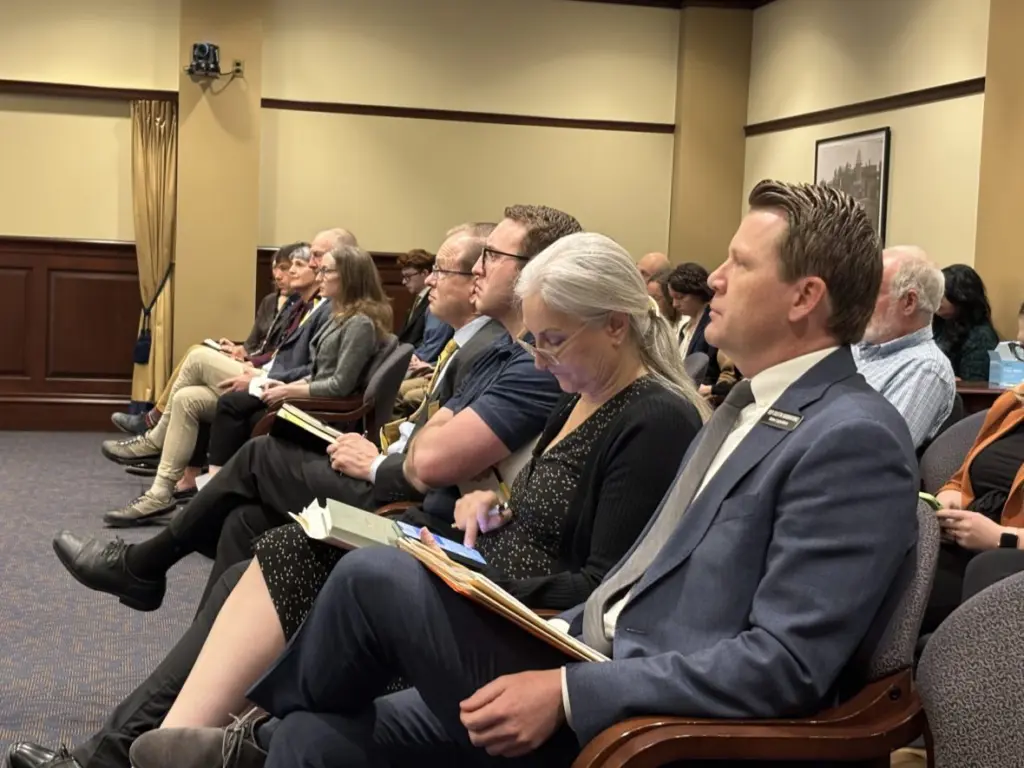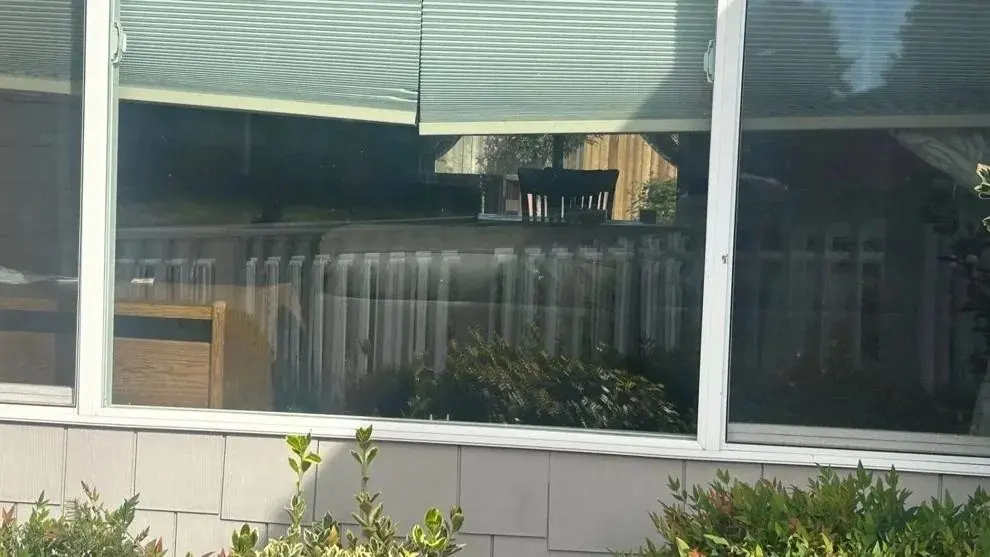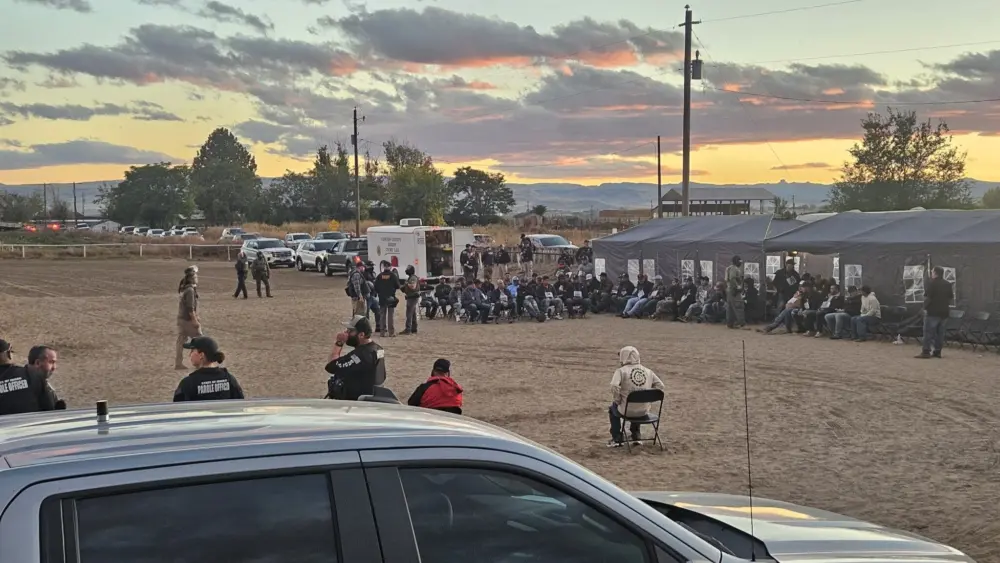Originally posted on IdahoEdNews.org on October 21, 2025
BOISE, ID – Lawmakers this year set a goal to subsidize tuition for 30 additional medical school students annually, an effort to ease state’s doctor shortage.
But university leaders want to go well beyond that. On Monday, medical education administrators from Idaho, Washington and Utah pitched ideas that would increase Idaho-supported medical school seats by the hundreds.
The medical education working group will next meet at 10 a.m. Monday at the Statehouse, to discuss the medical schools’ proposals and the possible costs.
In presentations to a medical education working group, the University of Idaho proposed a new medical degree program — based in Boise and offered in partnership with the University of Utah — that could enroll 120 new students by 2031.
Idaho State University made a case for buying the Idaho College of Osteopathic Medicine (ICOM) in Meridian, which enrolls more than 600 students. Idaho State also wants to launch a statewide medical education collaborative that would guide medical education planning and policy.
In the near term, leaders at medical schools that partner with Idaho universities — the University of Washington, University of Utah and ICOM— said they can add between 25 and 55 state-subsidized seats next year.
Monday’s proposals exceed what the Legislature asked for when it created the Medical Education Plan Working Group earlier this year. House Bill 368, passed in March, calls for subsidizing an additional 10 medical school seats per year, for three years, which would translate to 80 total state-supported seats by 2028.
Multiple university administrators said solving Idaho’s doctor shortage would take an “all-hands-on-deck” approach and a collaborative effort across the state’s medical education network. State Board of Education Executive Director Jennifer White applauded the institutions for working together on their proposals.
“I’m really grateful for the hard work and their prioritization of the state above the interests of any specific institution,” she said.
U of I announces plans for Boise MD program
The University of Idaho formally announced its plans to launch a medical program in Boise, in partnership with the University of Utah.
Officially a regional campus of Utah’s Spencer Fox Eccles School Medical School, the program would offer a doctor of medicine degree (MD), aimed at training rural doctors and keeping them in state after they graduate.
The program could launch with 30 new students by 2028, U of I and Utah officials said, and enroll 120 students by 2031.
“The University of Utah is a top-notch, well-respected medical school with a mission that emphasizes improving health in rural and underserved communities, which exactly aligns with Idaho’s needs,” said Rayme Geidl, interim co-director at U of I’s School of Health and Medical Professions.
The new proposal didn’t come as a surprise to the working group. Idaho Education News reported last month that U of I had asked the state for $8.5 million to make room at its Idaho Water Center in downtown Boise for a medical partnership with Utah. But U of I had yet to share specifics.
The Treasure Valley is the “ideal location,” Geidl said. It would place the program near some of the state’s largest health care networks, and offer opportunities for collaboration with nearby sister institutions Boise State University and Idaho State, which has a health science campus in Meridian. U of I and Idaho State already are discussing ways to share laboratory and office space in the Treasure Valley.
Rep. Dustin Manwaring, one of two lawmakers on the working group, noted that creating 30 medical school seats in 2028 doesn’t exactly follow House Bill 368, which he co-sponsored. The bill calls for 10 new seats per year over the next three years — not 30 seats three years from now.
“What is the recommendation from the University of Idaho, then, going into the next legislative session?” asked Manwaring, R-Pocatello. “What do we do for the next few years?”
Currently, the state of Idaho pays about half the tuition for 40 students enrolled each year in WWAMI, the University of Washington’s regional medical school, named for the member states of Washington, Wyoming, Alaska, Montana and Idaho. In addition, Idaho subsidizes 10 students a year at Utah’s Spencer Fox Eccles School in Salt Lake City.
On Monday, Utah officials offered to take another 10 seats next year, and WWAMI officials offered five. ICOM’s president also suggested that the state start subsidizing some of his in-state students — between 10 and 40 seats.
U of I officials believe the state can fund these new seats, which would satisfy the “letter of the law,” and also support the new Boise MD program, Geidl said. “We think all of the above should be done.”
Utah would want to make the increase in Idaho seats permanent, said Benjamin Chan, the Utah medical school’s associate dean of admissions and Idaho affairs. The medical school gets more than 130 Idaho applicants in a given year.
“There certainly is a demand, and it’s very, very competitive,” Chan said.
Idaho State proposes medical education collaborative
Idaho State University, meanwhile, wants to lead a statewide collaborative that would bring medical education planning and research — both undergraduate and graduate — under one umbrella.
The Idaho Health Education Collaborative (IHEC) would be responsible for coordinating clinical placements, expanding rural medicine programs, researching public policy and recruiting preceptors — doctors that train medical students in a clinical setting — said Rex Force, Idaho State’s vice president for health sciences.
“This isn’t a new agency or a new bureaucracy,” he said. “It’s a lean, results-oriented framework that would help Idaho institutions work smarter, work together with the resources we already have.”
Idaho State would oversee the collaborative, leveraging its “statewide infrastructure and leadership” in health sciences education, Force said.
Working group member Shawn Keough, who’s also a State Board member, told Force that she’s interested in the collaborative and wants to discuss it further. But she said the State Board should be in charge.
“I’ve seen this as something that would live in the State Board of Education, with everyone’s participation,” she said. “For a lot of reasons, that is where it should be housed.”
IHEC would report to the State Board, Force responded. But the collaborative would require academic expertise, and it would have to include all health education disciplines. It would also be a “fairly large undertaking.”
“I’m not sure that the board office would be prepared, at least not without a significant investment, to cover the elements that we talked about here,” he said.
Idaho State makes case for ICOM purchase
The state should also consider subsidizing seats at ICOM, said President Tracy Farnsworth.
Farnsworth suggested that the state pay half tuition for between 10 and 40 ICOM students. They would have to abide by a payback requirement — similar to the one required of Idaho students attending Utah’s medical school — if they don’t work in Idaho for at least four years after graduation.
“I agree with my colleagues who have said that this issue, this physician deficit, in Idaho is so big and so serious that it does require all hands on deck,” Farnsworth said.
But subsidizing seats at ICOM would be a “short-term solution,” Force said, before arguing that Idaho State should buy the private college. Idaho State already partners with Meridian-based school to offer a doctor of osteopathic medicine degree (DO).
ICOM’s owners are looking to sell, Force said. If an out-of-state buyer swoops in, the state would miss an opportunity to expand student access and affordability and to tailor a medical school to Idaho’s needs.
“ISU believes that buying seats is a short-term solution, and that a public purchase of ICOM needs to be finalized over the next couple of years,” Force said.
EdNews previously reported that Idaho State had hired private consultants to study a possible ICOM purchase. A report was expected in October. But consultants have yet to nail down a valuation, Force said.
Ted Epperly, a working group member and the State Board’s graduate medical education coordinator, asked whether Idaho State is projecting that ICOM would be a “net positive” financially.
Medical schools typically cover their own expenses, Force said. That’s through tuition and fees but also clinical revenue and grant income, and there are “all kinds of direct and indirect benefits” that come with owning a medical school.
“I wouldn’t be standing here and proposing this if I didn’t think it could make good financial sense for the state of Idaho,” he said.
WWAMI offers five seats, increase in clinical sites
House Bill 368 — the medical education plan passed by the Legislature earlier this year — said none of the 30 planned medical school seats should be at WWAMI, the University of Washington’s regional medical school.
WWAMI officials made a pitch, anyway.
The program could add five Idaho seats by next school year, increasing the total number to 45, they said. WWAMI is also working on expanding clinical sites, where medical students complete required on-the-job training. WWAMI could increase its number of sites from 50 to 65 by next school year, said Mary Barinaga, assistant regional dean for Idaho.
One of the medical education working group’s goals is to expand the state’s network of clinical sites and preceptors, doctors willing to train medical students in the field. Just 15% of Idaho doctors are teaching. WWAMI, which has partnered with U of I since 1972, has the state’s most established network.
Epperly asked WWAMI officials whether it’s possible for higher education institutions to share the clinical sites and preceptors. “Can we make them agnostic?” he said. “Or are they going to be little fortresses with walls set up?”
The challenge is that medical schools have different curricular requirements, said Suzanne Allen, vice dean for academic, rural and regional affairs at the University of Washington School of Medicine.
The Liaison Committee on Medical Education (LCME) has a process for allopathic institutions to allow preceptors who work with students across institutions, Allen said. But Idaho students pursue two different types of medical degrees — an MD, offered by WWAMI and Utah, along with a DO, offered by ICOM.
“It would be very challenging to have people from different medical schools on the same team working with the same people at the same time,” Allen said. “Is there a way to work on that? Potentially.”





